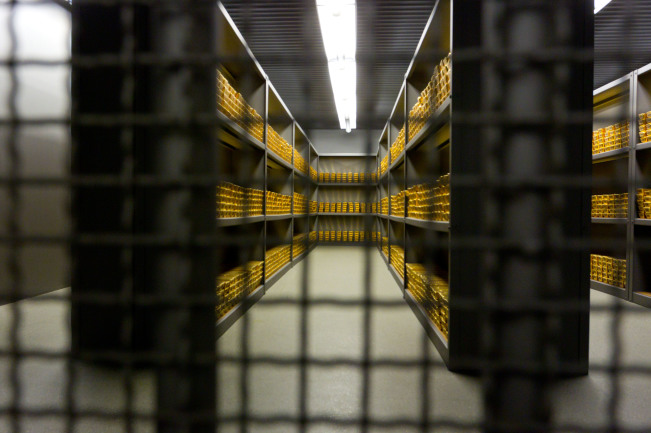2015 Update on Bundesbank Gold Repatriation
Deutsche Bundesbank has just released a progress report on its gold bar repatriation programme for 2015 – “Frankfurt becomes Bundesbank’s largest gold storage location“.
During the calendar year to December 2015, the Bundesbank claims to have transported 210 tonnes of gold back to Frankfurt, moving circa 110 tonnes from Paris to Frankfurt, and just under 100 tonnes from New York to Frankfurt.
As a reminder, the Bundesbank is engaged in an unusual multi-year repatriation programme to transport 300 tonnes of gold back to Frankfurt from the vaults of the Federal Reserve Bank of New York (FRBNY), and simultaneously to bring 374 tonnes of gold back to Frankfurt from the vaults of the Banque de France in Paris. This programme began in 2013 and is scheduled to complete by 2020. I use the word ‘unusual’ because the Bundesbank could technically transport all 674 tonnes of this gold back to Frankfurt in a few weeks or less if it really wanted to, so there are undoubtedly some unpublished limitations as to why the German central bank has not yet done so.
Given the latest update from the German central bank today, the geographic distribution of the Bundesbank gold reserves is now as follows, with the largest share of the German gold now being stored domestically:
- 1,402.5 tonnes, or 41.5% now stored domestically by the Bundesbank at its storage vaults in Frankfurt, Germany
- 1,347.4 tonnes, or 39.9%, stored at the Federal Reserve Bank in New York
- 434.7 tonnes or 12.9% stored at the Bank of England vaults in London
- 196.4 tonnes, or 5.8%, stored at the Banque de France in Paris
In January 2013, prior to the commencement of the programme, the geographical distribution of the Bundesbank gold reserves was 1,536 tonnes or 45% at the FRBNY, 374 tonnes or 11%, at the Banque de France, 445 tonnes or 13% at the Bank of England, and 1036 tonnes or 31% in Frankfurt.
The latest moves now mean that over 3 years from January 2013 to December 2015, the Bundesbank has retrieved 366 tonnes of gold back to home soil (189 tonnes from New York (5 tonnes in 2013, 85 tonnes in 2014, and between 99-100 tonnes in 2015), as well as 177 tonnes from Paris (32 tonnes in 2013, 35 tonnes in 2014, and 110 tonnes in 2015)). The latest transfers still leave 110 tonnes of gold to shift out of New York in the future and 196.4 tonnes to move the short distance from Paris to Frankfurt.
In the first year of operation of the repatriation scheme during 2013, the Bundesbank transferred a meagre 37 tonnes of gold in total to Frankfurt, of which a tiny 5 tonnes came from the FRBNY, and only 32 tonnes from Paris. Whatever those excessive limitations were in 2013, they don’t appear to be so constraining now. In 2014, 85 tonnes were let out of the FRBNY and 35 tonnes made the trip from Paris. See Koos Jansen’s January 2015 blog titled “Germany Repatriated 120 Tonnes Of Gold In 2014" for more details on the 2014 repatriation.
Those who track the “Federal Reserve Board Foreign Official Assets Held at Federal Reserve Banks" foreign earmarked gold table may notice that between January 2015 and November 2015 , circa 4 million ounces, or 124 tonnes of gold, were withdrawn from FRB gold vaults. Given that the Bundesbank claims to have moved 110 tonnes from New York during 2015, this implies that there were also at least 14 tonnes of other non-Bundesbank withdrawals from the FRB during 2015. Unless of course the other gold was withdrawn from the FRB, shipped to Paris, and then became part of the Paris withdrawals for the account of the Bundesbank. The FRB will again update its foreign earmarked gold holdings table this week with December 2015 withdrawals (if any), which may show an even larger non-Bundesbank gold delta for year-end 2015.
Notably, the latest press release today does not mention whether any of the gold withdrawn from the FRBNY was melted down / recast into Good Delivery bars. Some readers will recall that the Bundesbank’s updates for 2013 and 2014 did refer to such bar remelting/recasting events.
Today’s press release does however include some ‘assurances’ from the Bundesbank about the authenticity and quality of the returned bars:
“The Bundesbank assures the identity and authenticity of German gold reserves throughout the transfer process – from when they are removed from the storage locations abroad until they are stored in Frankfurt am Main. Once they arrive in Frankfurt am Main, all the transferred gold bars are thoroughly and exhaustively inspected and verified by the Bundesbank. When all the inspections of transfers to date had been concluded, no irregularities came to light with regard to the authenticity, fineness and weight of the bars."
This above paragraph in today’s press release was actually lifted wholesale from the Bundesbank’s gold repatriation press release dated 19 January 2015 , minus one key sentence:
“The Bundesbank assures the identity and authenticity of German gold reserves throughout the transfer process – from when they are removed from warehouses abroad until they are stored in Frankfurt am Main. As soon as the gold was removed from the warehouse locations abroad, Bundesbank employees cross-checked the lists of bars belonging to the Bundesbank against the information on the bars removed. Finally, once they arrived in Frankfurt am Main, all the transferred gold bars were thoroughly and exhaustively inspected and verified by the Bundesbank. When all the inspections had been concluded, no irregularities came to light with regard to the authenticity, fineness and weight of the bars."
So, was there no list of bars this time around?
But why the need at all for such a general comment on the quality of the bars while not providing any real details of the bars transferred, their serial numbers, their refiner brands, or their years of manufacture? Perhaps remelting/recasting of bars was undertaken during 2015 and the Bundesbank is now opting for the cautious approach after getting some awkward questions last year about these topics – i.e. the Bundesbank’s approach may well be “don’t mention recasting / remelting and maybe no one will ask“.
Limited Hangout
This bring us to an important point. Beyond the Bundesbank’s hype, its important to note that the repatriation information in all of the press releases and updates from the Bundesbank since 2013 has excluded most of the critical information about the actual gold bars being moved. So, for example, in this latest update concerning the 2015 transport operations, there is no complete bar list (weight list) of the bars repatriated, no explanation of the quality of gold transferred and whether bars of various purities were involved, no comment on whether any bars had to be re-melted and recast, no indication of which refineries, if any, were used, and no explanation of why it takes a projected 7 years to bring back 300 tonnes of gold that could be flown from New York to Frankfurt in a week using a few C-130 US transporter carriers.
There is also no explanation from the Bundesbank as to why these 100 tonnes of gold were available from New York in 2015 but not available during 2014 or 2013, nor why 110 tonnes of gold somehow became available in Paris during 2015 when these bars were not available in 2014 or 2013, nor why all 374 tonnes to be brought back from Paris can’t make it back on the 1 hour 15 minute air-route between Paris and Frankfurt between which multiple aircraft fly each and every day.
The crucial questions to ask in my view are where was the repatriated gold sourced from that has so far been supplied to the Bundesbank from New York and Paris, what were the refiner brands and years of manufacture for the bars, what are the details of the quality (fineness) of the gold trasnferred, and are these bars the same bars that the Bundesbank purchased when it accumulated its large stock of gold bars during the 1950s and especially the 1960s.
In essence, all of these updates from Frankfurt could be termed ‘limited hangouts’, a term used in the intelligence community, whereby the real behind the scenes details are left unmentioned, only hanging out snippets of information, and questions about the real information are invariably left unasked by the subservient mainstream media. Overall, it’s important to realise that the Bundesbank’s repatriation updates, press releases, and interviews since 2013 are carefully stage-managed, and that the German central bank continually uses weasel words to dodge genuine but simple questions about its gold reserves and the physical gold that is being transported back to Frankfurt.
For example, in October 2015, the Bundesbank released a partial inventory bar list/weight list of it gold holdings. At that time, on 8 October 2015, I asked the Bundesbank:
Hello Bundesbank Press Office,
Regarding the gold bar list published by the Bundesbank yesterday (07 October https://www.bundesbank.de/Redaktion/EN/Topics/2015/2015_10_07_gold.html), could the Bundesbank clarify why the published bar list does not include,for each bar, the refiner brand, the bar refinery serial number, and the year of manufacture, as per the normal convention for gold bar weight lists, and as per the requirements of London Good Delivery (LGD) gold bars?
Bundesbank bar list:https://www.bundesbank.de/Redaktion/EN/Downloads/Topics/2015_10_07_gold.pdf?__blob=publicationFile
From the London Good Delivery Rules, the following attributes are required on LGD bars http://www.lbma.org.uk/good-delivery-rules
“Marks:
Serial number (see additional comments in section 7 of the GDL Rules)
Assay stamp of refiner
Fineness (to four significant figures)
Year of manufacture (see additional comments in section 7 of the GDL Rules)"
“The marks should include the stamp of the refiner (which, if necessary for clear identification, should include its location), the assay mark (where used), the fineness, the serial number (which must not comprise of more than eleven digits or characters) and the year of manufacture as a four digit number unless incorporated as the first four digits in the bar number. If bar numbers are to be reused each year, then it is strongly recommended that the year of production is shown as the first four digits of the bar number although a separate four digit year stamp may be used in addition. If bar numbers are not to be recycled each year then the year of production must be shown as a separate four digit number.
Best Regards, Ronan Manly
The Bundesbank actually sent back two similar replies t the above email:
Answer 1:
“Dear Mr Manly,
Thank you for your query. Information on the refiner and year of production are not relevant for storage or accounting purposes, which require the weight data, the fineness and a unique number identifying each bar or melt. The Bundesbank has all of this information for each of its gold bars. By contrast, particulars relating to the refiner and year of production merely provide supplementary information. They tell us part of the gold bar’s history but do not describe its entire ‘life cycle’."
Yours sincerely,
DEUTSCHE BUNDESBANK Communication
Answer 2:
“Dear Mr Manly,
The crucial data for storage and accounting purposes are the weight, the fineness and a unique number identifying each bar or melt. The Bundesbank has all of this information for each of its gold bars, which it records electronically and also makes available to the public. In addition to the data on weight and fineness, the Bundesbank, the Bank of England and the Banque de France identify gold bars exclusively on the basis of internally assigned inventory numbers and not using the serial numbers provided by the refiners. These custodians do not classify the bar numbers stamped onto the gold bars by the refiner as individual inventory criteria. They do not use the refiner’s bar numbers as these are not based on a unique numbering system that can be used for identification purposes. Stating the refiner and the year of production is not required for storage or accounting purposes."
Yours sincerely,
DEUTSCHE BUNDESBANK Communication
Even the large gold ETFs produce detailed weight lists of their bar holdings, so you can see from the above answers that the Bundesbank is resorting to flimsy excuses in its inability to explain why it is not following standard practice across the gold industry.
For additional Bundesbank’s prevarications on its gold bars, please see my blog “The Keys to the Gold Vaults at the New York Fed – Part 3: ‘Coin Bars’, ‘Melts’ and the Bundesbank" in a section titled “The Curious Case of the German Bundesbank".
Finally, see BullionStar guest post from 8 October 2015 by Peter Boehringer, founder of the ‘Repatriate our Gold’ campaign – “Guest Post: 47 years after 1968, Bundesbank STILL fails to deliver a gold bar number list“. This guest post adeptly takes apart the Deutsche Bundesbank’s stage-managed communication strategy in and around its gold repatriation exercise, and asks the serious questions that the mainstream media fear to ask.
Popular Blog Posts by Ronan Manly
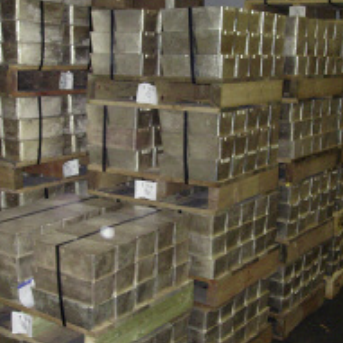 How Many Silver Bars Are in the LBMA's London Vaults?
How Many Silver Bars Are in the LBMA's London Vaults?
 ECB Gold Stored in 5 Locations, Won't Disclose Gold Bar List
ECB Gold Stored in 5 Locations, Won't Disclose Gold Bar List
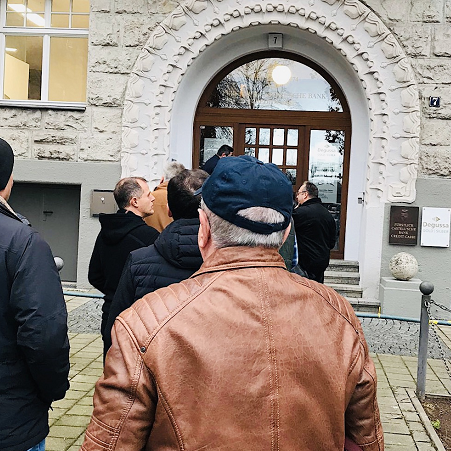 German Government Escalates War On Gold
German Government Escalates War On Gold
 Polish Central Bank Airlifts 8,000 Gold Bars From London
Polish Central Bank Airlifts 8,000 Gold Bars From London
 Quantum Leap as ABN AMRO Questions Gold Price Discovery
Quantum Leap as ABN AMRO Questions Gold Price Discovery
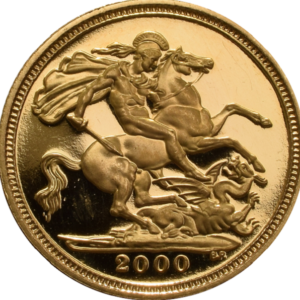 How Militaries Use Gold Coins as Emergency Money
How Militaries Use Gold Coins as Emergency Money
 JP Morgan's Nowak Charged With Rigging Precious Metals
JP Morgan's Nowak Charged With Rigging Precious Metals
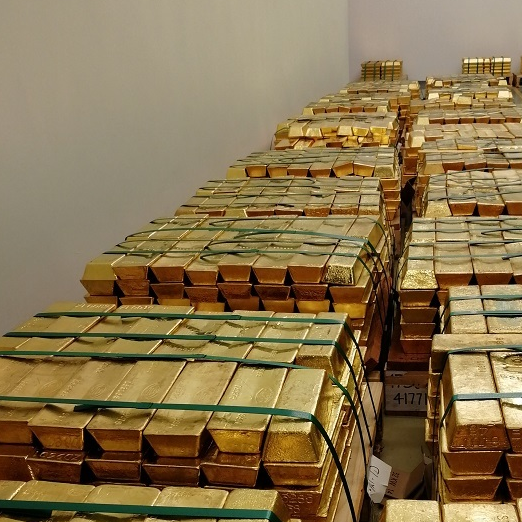 Hungary Announces 10-Fold Jump in Gold Reserves
Hungary Announces 10-Fold Jump in Gold Reserves
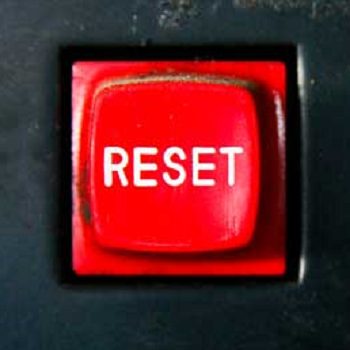 Planned in Advance by Central Banks: a 2020 System Reset
Planned in Advance by Central Banks: a 2020 System Reset
 Surging Silver Demand to Intensify Structural Deficit
Surging Silver Demand to Intensify Structural Deficit





 Ronan Manly
Ronan Manly 5 Comments
5 Comments